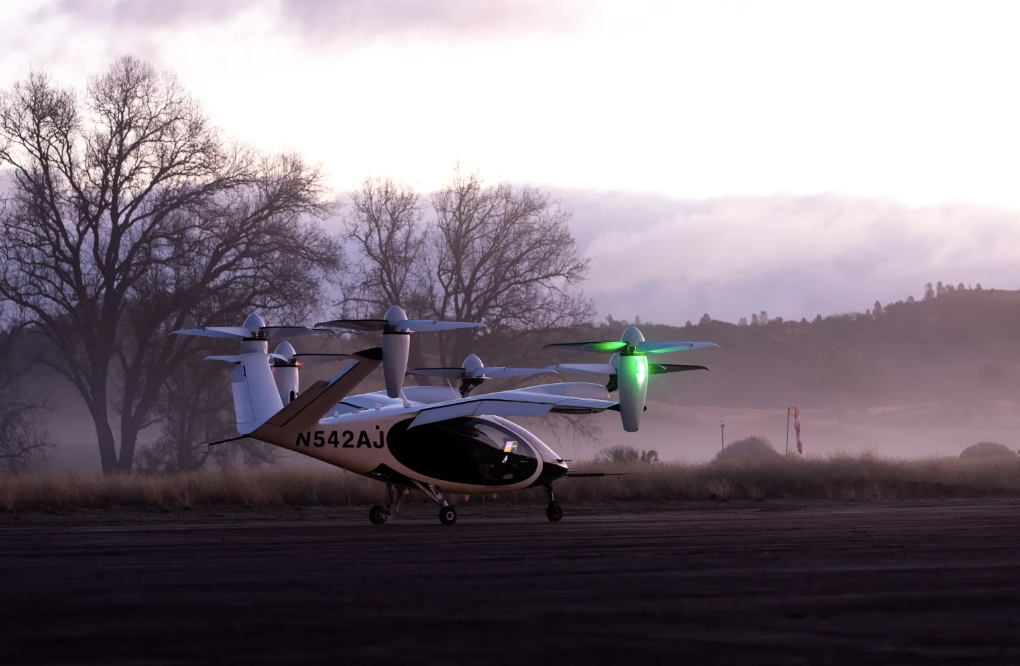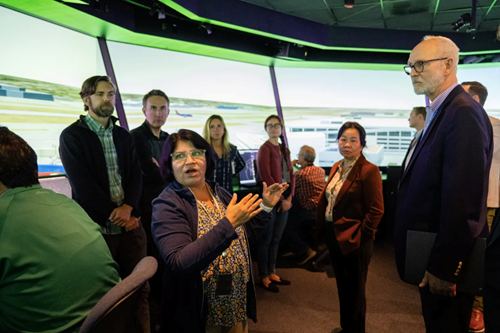Reducing air traffic control workload key to near-airport air taxi operations says NASA

Managing and reducing the workload of air traffic control (ATC) will be key to commercial air taxi operations in-and-around airports, according to NASA.
In preparation for air taxis flying in and out of airports, NASA and industry partners are working with the FAA to demonstrate how “creative use” of existing tools and airspace procedures can support safe integration. The latest step forward comes in the form of a new air traffic simulation developed by NASA’s Ames Research Center and Joby Aviation.
In December NASA and Joby researchers invited the FAA and the National Association of Air Traffic Controllers to view the simulation in the Ames air traffic control simulation facility, aka FutureFlight Central. Visitors were shown eVTOL pilots flying along NASA-developed, predetermined routes at Dallas-Fort Worth International Airport and Dallas Love Field Airport. Ames’ facility simulated weather conditions, live flight data and airport operational data.
The simulation showed how NASA-developed ATC procedures and airspace concepts would “significantly reduce the workload” on air traffic controllers for eVTOL operations in airports.
Savvy Verma UAM researcher at NASA's Ames Research Center tells Revolution.Aero: “The routes were designed to achieve higher tempo air taxi traffic because they reduce ATC communications. The routes could be closed or unavailable for any reason. We did not exercise closing routes and finding an alternate in these simulations. If air taxis were not flying on these routes, they would fly with regular communication with ATC as they would today, hence adding to ATC workload."
The route structure has been created keeping alternatives in mind, says Verma. “For example: We planned a vertiport on the terminal for flights flying to Dallas-Fort Worth airport, and we also planned a vertiport that is outside of DFW and could serve as an alternate in case the route to the Dallas-Fort Worth terminal vertiport is closed. We did the same for Dallas Love Field,” she explains.
|
(Front left) Savvy Verma at NASA’s Ames Research Center in California’s Silicon Valley explaining the latest air traffic management simulation to visitors. (credit NASA) |
Terrain is a huge factor in determining which airspace air taxis will operate in, according to Verma. Dallas-Fort Worth has large geographic areas of Class Bravo airspace that go all the way to the surface. This tends to imply more low altitude airspace is available for scaled air taxi operations.
“Class B means that the ATC will always be involved,” she says. “They have fewer general aviation aircraft flying around Dallas-Fort Worth whereas Love Field has lots of ambulances and care flights serving hospitals in the Dallas downtown area. In general, lower altitudes are available in Dallas. In LAX, there is more Class G/E airspace available for the air taxi operations without talking to ATC, but terrain is a huge factor.”
Whilst the study did not focus on demand analysis, Verma looks to industry forecasts that point to airport shuttles as the initial market for air taxi operations. “Passengers being shuttled to the airport from their homes and work is likely to be what air taxi may serve in the initial years,” she says.
“We’re trying to enable a better quality of life. Some people are stuck in traffic for hours on the way to the airport. A 12-mile trip can take 45 minutes. Imagine being able to do that same trip in 15 minutes,” adds Verma.
NASA’s initial analysis of the simulation indicates that researchers could scale procedures for operating eVTOLs in other airports throughout the country, which may reduce the associated workload on air traffic controllers.
NASA plans to publish a complete analysis of the simulation results in 2024.






.png)

.jpg)
Comments
There are no comments yet for this item
Join the discussion